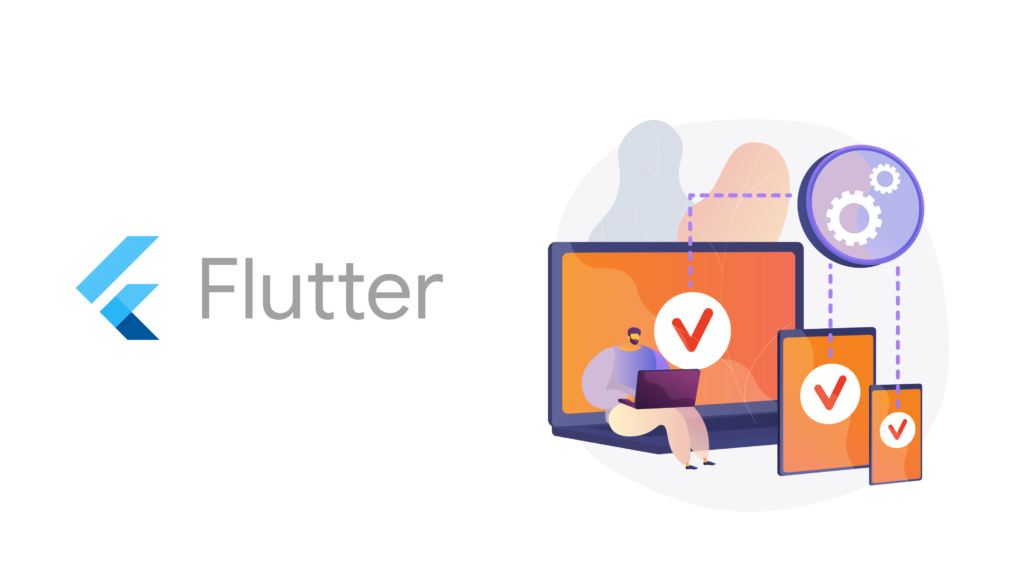Time and again, the app development market sphere has been subjected to many technological innovations. Flutter has garnered more attention for cross-platform app development in recent times. In fact, in a survey conducted among global developers in 2021, Flutter was chosen as the most popular app development framework. Read ahead and understand all about the growing trend of Flutter applications and its accompanying benefits.

Time and again, the app development market sphere has been subjected to many technological innovations. Flutter has garnered more attention for cross-platform app development in recent times. In fact, in a survey conducted among global developers in 2021, Flutter was chosen as the most popular app development framework. Read ahead and understand all about the growing trend of Flutter applications and its accompanying benefits.
Flutter is one of the popular choices for application development in the technology ecosystem lately. Being part of Google’s UI tool kit, this versatile cross-platform framework is ideal for building scalable and engaging native apps and user interfaces. Since one of the defining features of this framework is cost-effectiveness and higher performance, it is favoured by entrepreneurs, small businesses, and enterprises alike. If you are looking for some compelling data to aid you in choosing Flutter, we have it here for you.
As the feature-front of the Flutter development has been evolving through the years, the number of Flutter-powered applications has seen a significant rise. These are some of the Flutter development trends that have kick-started the higher traction.
A vital feature that sets Flutter apart from the rest of the frameworks is how it allows developers to create feature-efficient applications using a single code base. When other frameworks force developers to write multiple codes, this outstanding cross-platform framework allows them to create applications with little effort. For instance, employing Flutter for mobile app development accelerates the development phase since developers do not have to write separate codes for both Android and iOS. The framework has also opened up possibilities for better app designs and stable features.
Quick and simple quality assurance ensures the effectiveness of the functionalities, features, and other elements of Flutter-backed applications. This factor also eliminates the longer time periods before app deployment, saving clients from wasting more resources. This quicker turnaround time is also attributed to how developers can reuse the codes by integrating them with different plugins.
The ‘hot reloading’ or ‘hot restart’ feature offered in Flutter app development allows developers to view the progress made as a result of coding in real time. This functionality scales the development journey and comes in handy during bug fixing.
By leveraging Flutter for cross-platform application development, it is now possible to effortlessly build an MVP and garner attention from potential investors. The fact that Flutter speeds up the development process can significantly help MVP production. The use of a single code base further aids MVP development and also eliminates the need for tedious testing of project prototypes. Since both Flutter and Firebase go hand in hand, companies can use this feature to build efficient MVPs.
Flutter app development companies use the framework to engineer applications that come with an extensive collection of widgets. Since widgets form an important part of the application interface, developers tend to favour Flutter-powered apps for a smooth UI experience. The applications built using Flutter offer widgets including scrolling, navigation, and fonts – all of these can be customized despite the screen size.
It is easier to maintain Flutter applications owing to its use of a single code base in the programming. In the event of an error, developers can easily scan through the code and take necessary action at the earliest. This will save huge amounts of money and time since there is no reason to tediously go through numerous codes to pinpoint the error.
The cost for Flutter app development can vary depending on the requirements and the location of the service provider. For instance, if the requirement is for a simple application like a calculator, the price would simply range between $20k and $35k. For slightly complex apps like a dating app, the development time would be between 400 and 600 hours, and the cost would be between $30k and $50k. The estimation for building a complicated application like Uber can come up to $80k since the development time can cross over 800 hours.
Looking for a reliable Flutter app development company? Contact us today and benefit from our vast talent pool of Flutter developers.